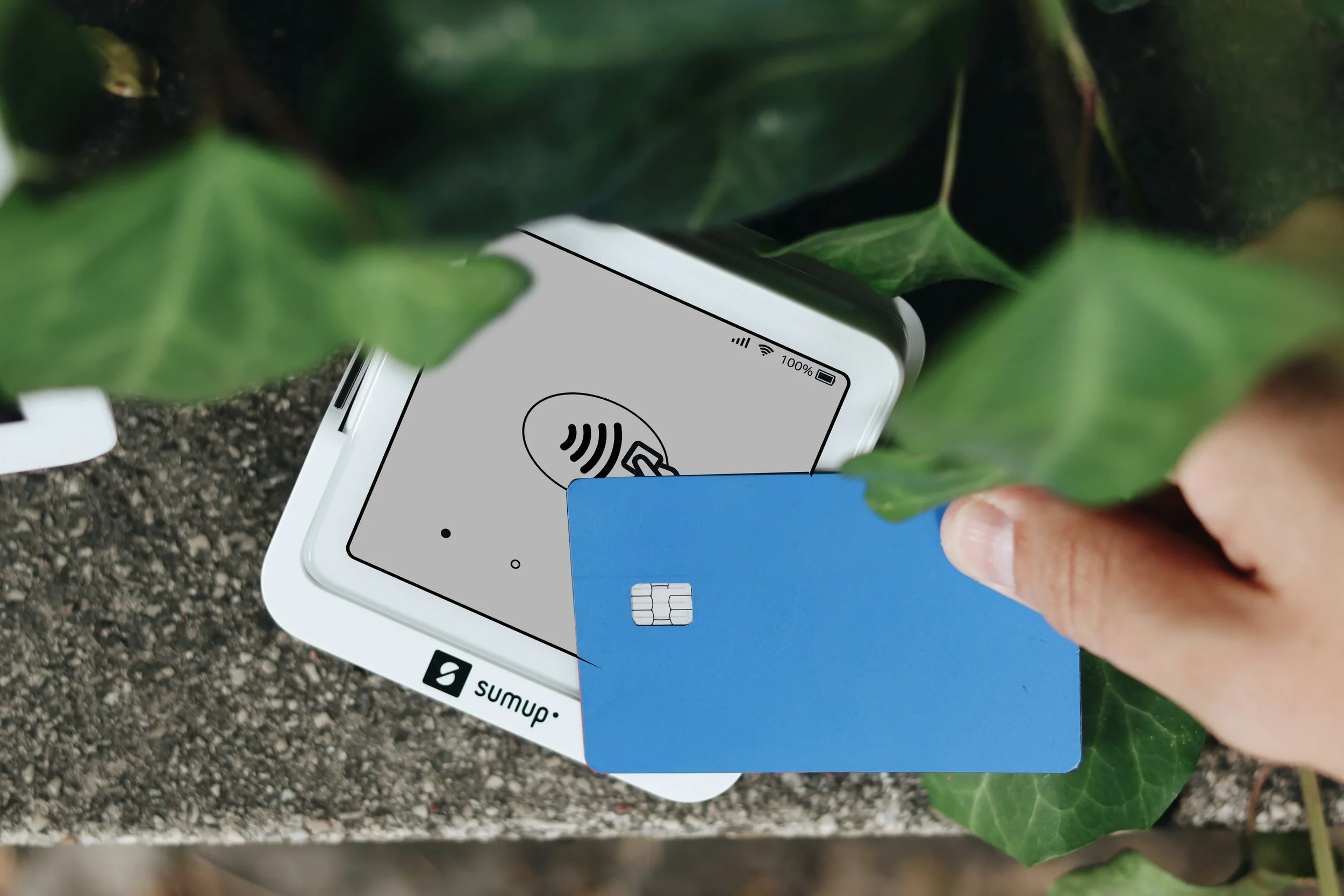How To Become a Freelance Writer With No Experience (Step-by-Step)
10 minute read ⏱️ | 2300 words 📖
Table of Contents
Here’s the truth: You don’t need a journalism degree, years of experience, or a portfolio that rivals Vogue to become a freelance writer. If you can write clearly, communicate well, and are willing to learn, you can get paid to write.
Freelance writing isn’t a secret club for MFA grads or English majors. It’s a skill you can learn, a career you can build, and yes, a scalable business you can start from scratch.
In this step-by-step guide, I’ll show you how how to start freelance writing with no experience, whether it’s part-time or full-time. The best part? All you really need is a WiFi connection and a basic tool like Google Docs to get started.
Understand What Freelance Writing Is - and What It’s Not
So you want to become a freelance writer? Awesome, welcome to the club! Harnessing your writing skills can unlock many collaborative opportunities. But before you post your first “I’m officially a freelance writer now!” update, let’s clear the air on what freelance writing actually is.
Whether you’ve got a solid grasp of the concept of freelance or you’re just starting out, here’s a refresher.
Freelancing is not just blogging. It can include multiple areas, like:
Blog posts and SEO articles
Web copy
Email newsletters
Case studies and whitepapers
eBooks
Product descriptions
Social media captions
Internal communications
Light graphic design
Technical writing
and more….
The key? Freelance writing means working for yourself, on your own schedule, and getting paid for your work. You’re typically paid per-project, per-word, or sometimes per-hour - not as a full-time employee.
Too Long Didn’t Read (TLDR):
If you can write clearly, meet deadlines, and communicate like a human being, you’re already halfway there.
Red Flags to Watch Out for
When you’re first learning how to start freelance writing with no experience, it’s important to note that not all freelance gigs are created equal. Some opportunities can be red flags that waste your time or, worse, exploit your work. Watch out for:
Companies asking for free "test" articles with no intention of paying you for your efforts, or bringing you onboard.
Offers that require you to pay to submit content.
Ads promising ridiculously low rates (think $5 for 1,000 words) or no payment terms at all.
A Quick Note: Rates vary globally, so a low rate might make sense in some regions. That said, $5 for 1000 words is a truly inexcusable (not to mention, unliveable) rate for North American freelancers.
How To Become a Freelance Writer with No Experience
Step 1: Determine Your Path: Generalist or Specialist
Ah, the great freelance debate: generalist or specialist?
I used to think a generalist approach was the way to go. By writing about different topics, you gain a broader perspective on what subjects you’re passionate about and which topics you’d be fine with leaving on the metaphorical back-burner.
When I first started in 2021, I wrote about skincare, health, wellness, and travel - my personal passions. I knew I could easily write about these topics without getting bored or burnt out by the work.
Eventually, I shifted my focus solely to travel, hospitality, and tech. I service not only travel and hospitality companies, like boutique hotels, large-scale hotel chains, tour companies, and vacation rentals, but also B2B SaaS companies that enable better workflows, data reporting, and operational efficiency for these properties.
I can now speak to certain topics in my industry with more expertise and authenticity, my clients are more trustworthy of my work and skillset given this niche is my primary focus, and I’m able to charge more because of my specialization.
TLDR:
A specialist approach gives you credibility, lets you charge more, and positions you as an expert.
A generalist approach is fine early on, but finding a niche eventually makes your work more marketable.
Step 2: Pick a Writing Niche, Even If You’re Not Sure Yet
One of the biggest mistakes new freelancers make is trying to write for everyone. It’s tempting - you want to keep your options open - but clients want specialists.
Choosing a niche early:
Gives you focus.
Makes your portfolio more cohesive.
Helps you stand out in a crowded market.
Positions you as the “go-to” writer for a specific type of content or client.
It’s also easier to position yourself as an expert in your niche, then market yourself across your channels and platforms.
TLDR:
Even if you’re still wondering how to be a freelance writer with no experience, niching down helps you to stand out faster and gives you portfolio focus.
How to Pick A Niche
Before you start to spiral about potentially choosing the wrong niche, don’t panic. You don’t need to commit to a niche forever, but choosing one early certainly makes things easier. It gives you direction, helps clients understand what you do, and makes your writing samples more cohesive.
Think about:
Industries you know or love
Accounting, pop culture, pet care, insects, even landscaping - any of these topics is a potential niche.
Topics you enjoy researching
At one point in my life, I considered completing a Masters degree. While I’ve mostly abandoned the idea, something the MA advisor said during those early discussions really stuck with me:
“You’re going to be writing about the same topic for years on end, so it has to be something you’re passionate about. That passion can either be a love or a hate, but it needs to fuel you.”
The same principle applies to your freelance business. You’ll focus on this topic a lot, so pick something you look forward to researching, writing, and immersing yourself in.
Previous job experience
Previously worked in retail? Or, managed social media for a local business? Leverage these experiences to help determine your niche and your content focus. Previously, I worked in education for five years. I thought education and edtech as a niche would suit me well. However, I have since pivoted (see, no need to stick with one niche forever!) and am a lot happier with my current industry of choice.
Publications vs. Businesses
This will be a big deciding factor, too. Writing for publications, businesses, or a mix of both, will likely influence your niche and the type of content you create.
Back to top
Step 3: Learn the Basics of Online Writing
You don’t need to write like Shakespeare to make money as a freelance writer. For beginner freelance writing, content rewards clarity over poetry. Your job is to make information easy to read, engaging, and valuable.
This means understanding how people consume content online by developing a few key skills:
Structuring articles for easy scanning.
Writing headlines and sub headers that capture attention.
Using keywords naturally for search engine optimization (SEO).
Adapting your tone to match your client’s brand voice.
Step 4: Set Up Your Portfolio
Good news! Most freelance clients you work with don’t care about your resume and the ones who do aren’t looking for a freelancer. They’re looking for an employee, or likely don’t know the difference.
Part of mastering freelance writing basics is about building a foundational portfolio to showcase to potential clients. So, how do you build proof without experience? Here are a few tips:
Write samples
Generally 2 to 3 samples is a good starting point. Post them to Medium, Notion, or in Google Docs. No one needs to know they weren’t paid. I did this when I first started freelancing, mostly writing listicles for skincare products on Amazon.
Repurpose old work
Polish and reuse anything that shows how you write, like school essays, LinkedIn posts, or newsletters. Prior to starting my business, I blogged for a year, mostly using my site as an online journal to get through the COVID-19 pandemic.
Guest post
While I don’t advocate new writers work for free forever, it can help to get some skin in the game, especially when you’re first starting out. I reached out to a small ecommerce skincare brand and offered a free blog post. That one article turned into a monthly blog cadence (I wrote one article for free per month), multiple referrals, and a testimonial I could use to showcase my skills and work ethic. The lesson with this is that value isn’t always about the paycheck - not in the beginning, anyway.
Back to top
Step 5: Set Your Rates
People tend to get a little squeamish on the topic of money. It’s also this stage where many freelance beginners get stuck. You don’t want to undercharge but you also don’t want to scare away your first client.
Before we dive into the actual what to charge discussion, let’s tackle how to charge first.
How Freelance Writers Get Paid
Below are the four primary payment methods I’ve experienced as a freelance writer that you might encounter as part of your business. Which you use will depend on your client’s project and preferences. Many have a pre-established method or preferred rate style when working with freelancers.
Per word
Common in journalism and content marketing, a per word rate means you get paid on a per word basis. For example, a 1000 word article at $0.20 per word, equals $200.00.
Per word is good for projects with a flexible scope, like writing an eBook. Perhaps the initial outline is quite rough, so it’s unclear what the final word count will be. In this instance, you’ll need a rate that adjusts with you as the scope of your work expands.
TLDR:
Per Hour = A good starting point for beginners. Common for articles or eBooks.
Per Hour
Hourly rates are often associated with consulting jobs, virtual assistant positions, and editing gigs. As the term implies, you’re charged per hour of work.
I don’t suggest an hourly rate if you’re first starting out. Unless you know how long it takes you to complete a certain type of project, a per hour rate potentially leaves cash on the table for your business. Even as someone who’s been doing this for four years, it takes a while to have a solid sense of how long a project is going to take.
Let me walk you through a scenario to help shed light on this situation. Let’s say you decide to charge your client $50 an hour for a 1000 word article.
What you think will only take you 4 hours, suddenly turns into 5 hours because you forgot to account for editing time. The project gradually morphs into 7 hours because of the back-and-forth communication with your client for their feedback and having to apply their edits.
Then, your client comes back and asks you if you can upload it to their content management system (CMS). Because you’re new and haven’t learned to set boundaries yet, you say yes, even though this was not part of your previously agreed upon scope. So, that’s another hour you didn’t account for.
Then you forgot to factor in that your client wants to pay you via wire transfer, which, depending on where you’re based, your bank will take off a 10-15% fee.
Your $200 should have actually been $400, but is now actually $170 because of the wire transfer fee. Plus, all those hours you didn’t account for are nowhere to be found.
If you must charge per hour, buffer in time for all of these potential extras. This is part of the learning curve and an all-too-common scenario for many new freelance writers, including myself when I was first starting out.
TLDR:
Per Hour = Useful for editing or consulting, but tricky for beginners.
Back to top
Per project
Otherwise known as a flat fee, a per project rate is great for establishing clear deliverables. For example, if you charge $500 per blog post, and your client wants 4 blog posts a month, you can expect to quote that client at a per project rate of $2000 per month.
Once you have a solid sense of how long a blog post will take you to write, this can be a good starting point for presenting your per project rate. Let’s say you know it takes you 5 hours to write a 1500 word blog post (with all potential extras included!) and you charge $100 an hour. So, a per project rate for the blog post would be $500.
TLDR:
Per Project = Flat fee for clear deliverables.
Retainer
The golden goose of freelance rate methods, retainers are the most stable form of payment after per project rates. This model offers ongoing, dependable, and predictable payment, and is the goal for many freelancers.
The structure of a retainer can vary depending on you and your client’s needs. Sometimes, a client will use a per-project method for retainers. Other times, a freelancer might charge their client X amount of $ in return for X amount of hours in a given month. Or, the client and freelancer might determine monthly milestones as a means to measure progress throughout the retainer period.
TLDR:
Retainer = Ongoing, predictable monthly income.
Pro Tip: Switch payment methods depending on the needs of your client’s project.
I set a retainer price with my client over the course of 8 months while working on their eBook. Once the client determined they needed to outsource a graphic designer for the cover art, I switched to charging an hourly rate, to help locate a designer. I didn’t know how long finding a graphic designer would take me and I hadn’t done much virtual assistant work up to this point.
I knew the scope of outsourcing someone would not expand, so I ran an hourly figure by the client that I thought was fair and equitable considering I had less experience.
Factors That Affect Your Rate
Increasing your rate depends on several factors - let’s explore a few below:
Ghostwriting (no byline = higher rate).
Complexity of work.
Client size and their budget.
“Ghostwriting means you don’t receive a byline or have your name credited on the piece. This means you can’t use the work in your portfolio to showcase your skills. Since you’re giving up public recognition and proof of your work, it’s common practice to charge a higher rate for ghostwriting projects.”
Managing Expectations: Realistic Earnings for Beginners
While it’s tempting to dream about big paychecks and 5-figure months, it’s important to stay grounded when you’re just starting out. A $10,000 month as a beginner freelance writer is rare. I’m not saying it’s not possible, just that it’s unlikely. Early on, your focus should be on building a strong portfolio, networking with other freelancers and industry professionals in your niche, and earning the trust of potential clients through consistent, quality work.
Step 6: Establish Your Online Presence
You don’t need a fancy logo or a professional photoshoot to get started. You don’t even need a full blown website.
At a minimum, invest in the following:
A clear LinkedIn profile that outlines your title, how you help your clients, and your contact information. If you’re not yet clear on your niche, including something as simple as “Freelance Writer” is a good place to start. See my LinkedIn profile below for inspiration.
A portfolio page - whether you set this up in Google Docs, Notion, or a free portfolio site like Contently, you need somewhere that will serve as the hub for all of your clippings. Pick one to start.
A short bio (2-3 sentences) - across your LinkedIn profile and portfolio page, there will be a section for you to include a bit of information about yourself. Things like what topics or niche you specialize in, where potential clients can find out more information about you, and of course, if you’re open to accepting new clients.
A professional email address - something as simple as firstname.lastname@gmail.com will do.
Many freelance writers procrastinate in these initial phases, mostly out of fear from actually committing to the next step. That said, future upgrades shouldn’t stall your business.
Pro Tip:
Take screenshots of your clippings and save them as PDFs to your desktop. This practice is helpful if your published piece is removed.
Back to top
Step 7: Find Opportunities
“I truly believe each freelancer is only as successful as they want to be. It’s the kind of business where you’re only as good as the amount of opportunities and leads you have coming in. ”
There are thousands of writing jobs out there. You just need to know where to look.
A few of the most common places include:
Job boards (ProBlogger, Contently)
LinkedIn
Facebook groups
Many beginners pick up their first writing jobs through a combination of these resources. However, if you’re really wondering how to start freelance work, it comes down to the art of cold pitching.
While job boards and freelance newsletters are super useful for sourcing gigs in your niche, most freelance work will rarely fall into your lap. They come from being brave and putting in the work to pitch properly and respectfully.
Sometimes I look back at my early attempts to pitch companies and cringe. They weren’t perfect, but I recognize they’re part of my growth. If there’s anything I’ve learned, it’s that we all have to endure a bit of discomfort as part of growing pains, to emerge as better freelancers and business owners.
Your first few clients likely won’t be big name platforms. There is a certain level of working on your street cred before bigger businesses are likely to work with you. In my experience, it took a few years before big travel tech companies like TravelPerk, Cloudbeds, and AltoVita became part of my client roster.
The way I connected with these clients involves a mix of opportunities. While I pitched TravelPerk via LinkedIn, Cloudbeds and AltoVita came to me, either through cold connections or referrals. You know when clients are coming to you and not the other way around, you’re doing something right!
Step 8: Send Your First Pitch
Pitching sounds scary, until you realize most people don’t do it well. I certainly didn’t when when I was first learning how to start freelance work! It felt awkward, clunky, invasive, and a little unnatural.
With pitching, it’s really easy to fall into an overthinking trap. However, the more you do it, the more confidence you build, and the better your pitch gets. Here’s a basic cold pitch formula to help you get started:
Hi [Name],
Hope you’re well! I help [type of business] with [type of content]. I saw you [specific observation] and had an idea for a piece on [topic]. You can check out my portfolio here [link]. Appreciate the chance to connect.
Thanks for your time,
– [Your name]
Keep it short yet personal, link to your writing samples, and hit send. Rinse and repeat.
Pro Tips
Don’t send a novel. These days, the average attention span is a mere 8.25 seconds, less than that of a goldfish. You have to catch your subject’s attention, show you’re legit, and position yourself as a viable freelance option. Be brief and direct.
Customize your pitch. Mention something specific about the business. Whether it’s an article the recipient of your pitch recently published, a new feature or product, or something you saw on LinkedIn. Make your pitch timely, relevant, and tailored to the person and company.
Follow up. People are busy so don’t be afraid to follow-up - but don’t go overboard. You don’t want to annoy a potential lead with a barrage of follow ups. I send my initial pitch on Day 1, follow up on Day 7, then follow up a final time on Day 14.
Use a CRM. Sending pitches and managing responses can be overwhelming, so I recommend using some sort of customer relationship management (CRM) tool for efficiency. I like Streak CRM. The handy browser extension easily integrates with your Gmail, lets you save email templates, notifies you when your pitch has been read, and enables set reminders for follow-ups. Best of all, its email power tools are completely free!
Expect non responses. Pitching is a numbers game, so don’t be discouraged or take it personally if you don’t hear back. No equals redirection to the right client.
Step 9: Build Credibility As You Go
Rejection is a part of life. Whether that’s job opportunities, online dating, and yes, freelancing. So is refining your niche, raising your rates, and finding better clients.
For those in-between moments when you’re not writing or sending invoices, I encourage you to continuously build your skills and improve your online presence, using these additional tips for mastering freelance writing basics:
Connect with freelance writers
Let’s make one thing clear. Fellow freelancers are not your competitors. They are your collaborators, your community, and a vital source of guidance. These elements are especially important on days when being a solopreneur gets lonely, which can happen.
Initially, I joined groups for freelance writers on Facebook. Not only was I able to meet and connect with fellow writers, but I also got my first freelance gig. These days, I’m most active on LinkedIn, and have since connected with many of the freelancers who initially inspired me in the same Facebook group.
Back to top
Follow industry professionals and thought leaders
Industry experts in your niche only stand to enhance your knowledge of the space thanks to their expertise and know-how.
I follow many short-term rental professionals, hoteliers, and founders of large travel and hospitality tech companies. Their insights are always valuable and a platform like LinkedIn allows me to engage authentically.
Study strong content in your niche
What does comprehensive, authentic content look like to the industry you serve? How can you best position yourself to deliver this to clients? By understanding what strong content looks, feels, and sounds like within your niche. Study content from brands you admire and would like to work with.
Read regularly
In a similar vein, becoming a better writer starts with becoming a better reader, so absorb as much content in as many varieties as possible. Whether it’s subscribing to email newsletters in your industry, catching up on LinkedIn posts, watching a YouTube video, or event kicking back with a novel, you’re actively contributing to your freelance business and remaining up-to-date on the latest trends and information.
Write regularly
The only way you get better at something in life is by practicing, failing, getting back up, and practicing some more. Writing is no different, so develop a regular practice of writing, however that fits with your schedule. Whether that’s for clients, creating LinkedIn posts, operating a blog, or taking up a regular journaling habit. You’ll hone your craft and be a better writer for it.
Invest in a Basic Website (When You’re Ready)
Once you start earning consistently as a freelance writer, it’s a great idea to invest in a basic website. Think of your website as your digital business card and portfolio all rolled into one. It’s a professional home base where potential clients can learn who you are, see your work, and contact you easily.
As your business grows, having your own domain and website signals professionalism and helps build trust. Plus, it gives you complete control over your branding and content.
I use Squarespace. It’s user-friendly, offers beautiful templates, and requires zero coding skills, which makes it ideal for busy freelancers. However, there are plenty of other content management systems (CMS) to explore, depending on your style and needs.
WordPress is incredibly flexible and has tons of plugins, while Webflow offers advanced design options for those wanting a highly customized site without coding. Whichever platform you choose, the key is to keep your site clean, easy to navigate, and focused on demonstrating your value as a writer.
Freelance Writing Basics: Building a Career That Pays
Starting freelance writing from scratch might feel intimidating, but remember this: clarity, consistency, and courage will take you further than a perfect portfolio or a fancy degree ever could. Every expert freelancer started somewhere, often with zero experience and a WiFi connection.
By following these steps - understanding what freelance writing really is, choosing a niche, building a portfolio, setting your rates, and pitching confidently - you’re laying a strong foundation for a sustainable freelance career. Along the way, you’ll refine your skills, discover your strengths, and build a network that supports your growth.
Ready to see how strategic content can elevate your business without you lifting a pen? Let’s connect for a free 30-minute consultation. I’ll dive into your project with you, map out a clear content plan, and help you get results fast. Book your call here.
Frequently Asked Questions
Do I really need experience to start freelance writing?
Not at all. If you can write clearly, meet deadlines, and communicate well, you can start today. Your first clients likely don’t care about a resume - they care about results. Build a small portfolio, pitch confidently, and you’re good to go.
How do I choose a niche if I’m unsure?
Start with what you know, love, or are curious about. Think about your hobbies, past work experience, or industries you’ve researched. You can pivot later. Your first niche doesn’t have to be forever.
Do I need a website to get clients?
Nope. A LinkedIn profile and a portfolio hosted on Google Docs, Notion, or Contently are enough to start. A website is nice but not required. Focus on launching, not perfection.
How much should I charge as a beginner?
It depends on the project, but don’t undervalue your time. For beginners, per-project rates are usually easiest. Start with realistic rates, then increase as you gain experience and credibility. Ghostwriting and specialized niches usually justify higher rates.
How do I find freelance writing gigs?
Opportunities are everywhere: job boards, LinkedIn, freelance marketplaces, and cold pitching businesses directly. Early on, be persistent and proactive; your first few clients might not be big names, but they’re stepping stones.
Is rejection normal?
Absolutely. Every freelancer gets “no” before getting “yes.” Treat rejection as a learning opportunity, refine your pitch, and keep going. It’s part of the growth process.
How can I improve my skills while freelancing?
Read widely in your niche.
Follow industry experts.
Study strong content from brands you admire.
Connect with other freelancers and share knowledge.
Continuous learning is part of the job. Your growth fuels your business.
How long does it take to build a steady freelance income?
It varies. Some people see traction in a few months, others take a year or more. Focus on consistent pitching, building your portfolio, and networking. Growth compounds over time.
Back to top










